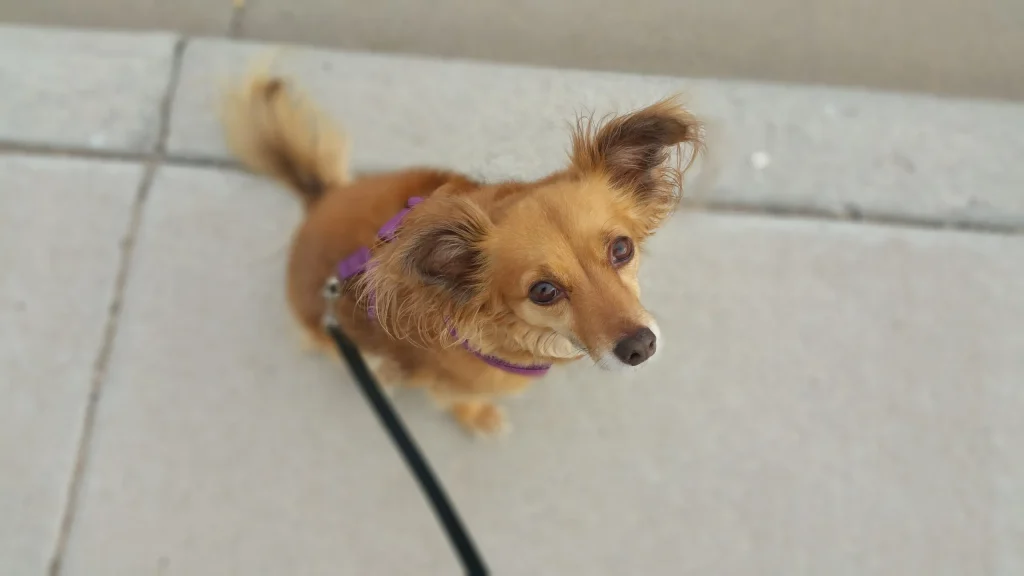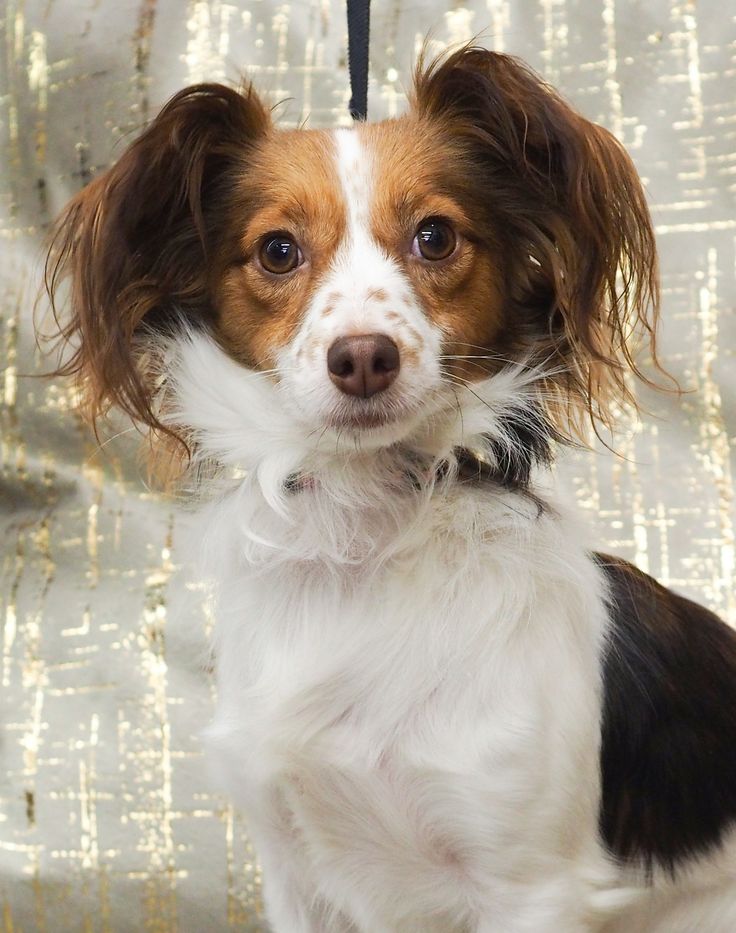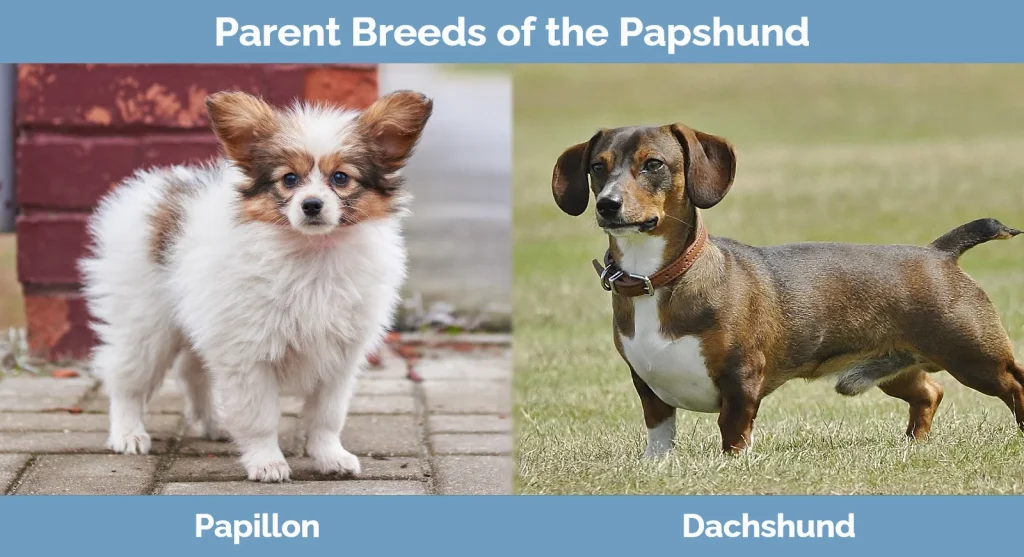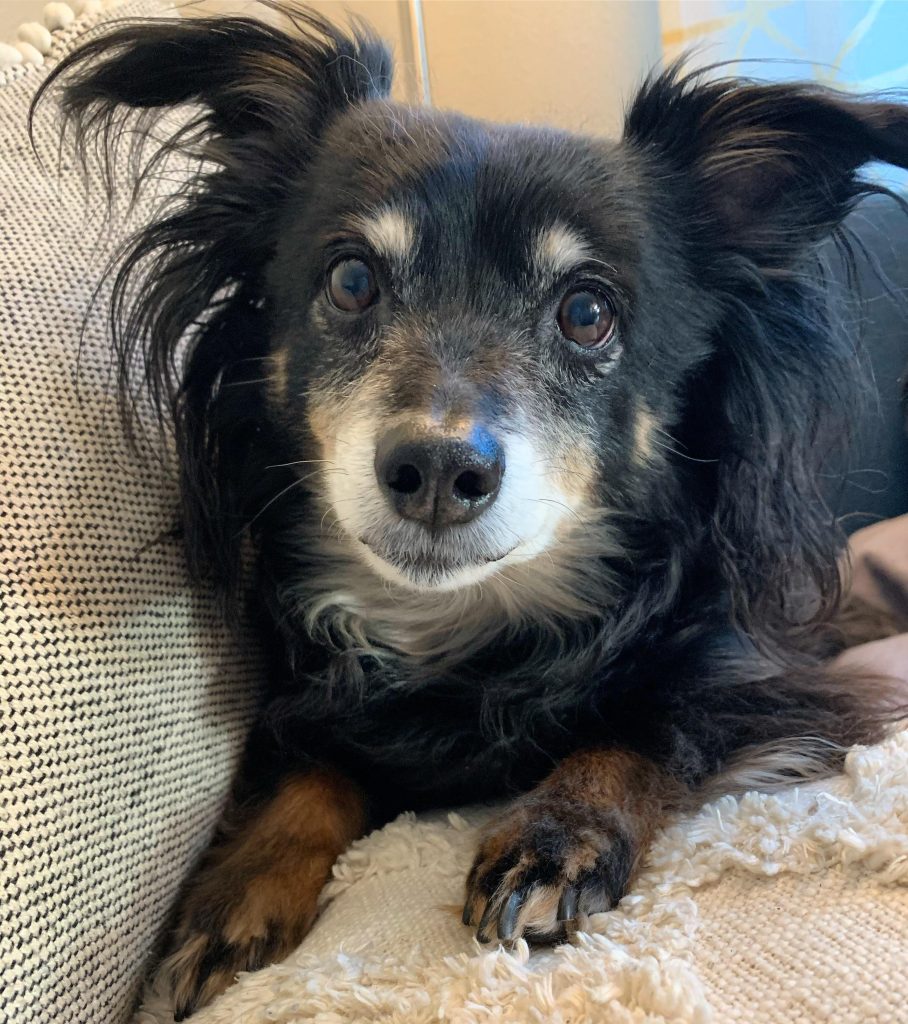
“Papillon Dachshund Mix”
| Weight | 10-18 |
| Height | 9-11 |
| Lifespan | 13-15 |
| Coat Colors | Cream, White, Red, Black, Brown |
| Coat Traits | Medium to Long, Sort of Dense, Straight |
| Temperament | Outgoing, Bold, Social, Expressive |
Welcome to the delightful world of the Papshund, a rare designer dog breed that captures hearts with its unique charm and vibrant personality. This cross between the Dachshund and Papillon—both esteemed breeds in their own right—brings together the best of both worlds, creating an adorable dog that’s perfect for various households.
Understanding the Papshund begins with appreciating its heritage. With the Dachshund’s bold spirit and the Papillon’s graceful agility, this mix is not just cute but also brimming with intelligence and energy. They make excellent companions, always ready to engage and entertain their families.
For those considering adding a Papshund to their life, knowing what makes them thrive is crucial. From their exercise needs to their social behaviors, every aspect of their care is a journey worth exploring.
Join us as we delve into the essentials of caring for a Papshund, ensuring they live a happy, healthy life. Whether you’re a seasoned dog owner or a first-timer, this guide will equip you with all you need to know about this captivating breed.
History
The Papshund is a fascinating example of a designer dog, born from the desire to blend the distinct qualities of two popular breeds. This section explores the historical background that led to the creation of these adorable dogs.
Origins of the Papshund
The Papshund emerged as a cross between the Dachshund and the Papillon, each with a storied history. The Dachshund, famously known as the badger dog, was bred for hunting, using its long, low body to delve into badger dens. The Papillon, with its characteristic big butterfly ears, was a favorite in royal courts for its elegance and lively spirit.
Development as a Breed
While not recognized by major breed associations, the Papshund has been gaining popularity thanks to its endearing qualities and suitability as a companion animal. These dogs combine the courage and determination of the Dachshund with the agility and alertness of the Papillon, making them more than just cute dogs—they are also versatile and engaging companions.
Appearance
The appearance of the Papshund is a delightful blend of its parent breeds, featuring characteristics that make them stand out as eye-catching breeds. This section describes their unique physical traits.
Physical Traits
Papshunds inherit the long body of the Dachshund mixed with the finer, more delicate bone structure of the Papillon. Their most distinctive feature is undoubtedly the big butterfly ears, reminiscent of the Papillon, set on a head that may echo the Dachshund’s shape. Their coats can vary significantly, often displaying the dense, longer fur typical of the Papillon or the shorter, sleek fur of the Dachshund.
Size and Color
Typically small to medium in size, Papshunds are adaptable to various living situations. They commonly exhibit a mix of colors, often blending the dark, rich tones of the Dachshund with lighter, vibrant shades from the Papillon side. This variety in appearance only adds to their charm, making each Papshund puppy uniquely adorable.

Temperament
The temperament of the Papshund is a delightful mix of affection, intelligence, and playfulness, making them an affectionate dog ideal for families and individuals alike. Let’s explore what makes their personality so engaging.
Personality Traits
Papshunds are known for their outgoing and spirited nature. They inherit the Dachshund’s boldness and the Papillon’s sociability, resulting in a dog that loves interaction and is often quite expressive. These traits make them excellent companions who can connect deeply with their dog owners.
Interaction with Family and Other Pets
Despite their small size, Papshunds have a big heart when it comes to family. They generally do well with older children and can get along with other pets, especially if raised together. Early socialization is key to helping them develop a gentle and friendly demeanor towards other dogs and people, reducing any tendency towards separation anxiety. Their capacity for empathy and connection makes them a truly wonderful companion in diverse households.
Living Environment
The Papshund’s adaptable nature makes them well-suited to various living situations, whether it’s a spacious house or a cozy apartment. Here’s what you need to know to create a comfortable and stress-free home for these charming dogs.
Home Adaptations
To accommodate a Papshund’s lively and curious nature, ensure your living space is safe and secure. Proper socialization areas within the home can help manage their energy and curiosity without risks. A poorly established fence should be avoided as their small size and agility might lead them to escape adventures.
Compatibility with Living Spaces
Papshunds are quite flexible when it comes to their living environment. They do well in apartments as long as they have access to regular exercise. However, having access to a yard where they can explore and play safely under supervision can significantly enhance their overall well-being. Their size and adaptability make them ideal for both rural and urban settings, ensuring they remain happy and healthy in their living space.

Nutrition
Proper nutrition is vital for maintaining the health and vitality of a Papshund. Understanding their dietary needs helps prevent common issues like excess weight and ensures they get the right balance of nutrients.
Essential Nutrients
Papshunds thrive on a diet rich in healthy fats and proteins, which support their energetic lifestyle and help maintain a healthy coat. It’s crucial to measure their food portions to prevent obesity, particularly given their propensity to gain weight due to their smaller size and sometimes less active lifestyle.
Feeding Practices
Feeding your Papshund high-quality dog food that suits their age, size, and energy level is essential. Proper nutrition involves more than just good quality food; it also includes understanding the eating habits that best suit this breed. Avoid free-feeding and establish a feeding schedule to help manage their diet effectively, reducing the risk of health issues related to overeating. Additionally, occasional treats can be given, but always in moderation.
Exercise
Regular exercise is essential for the Papshund, a high energy dog that thrives on activity. Keeping them physically active not only promotes a healthy lifestyle but also helps mitigate behaviors linked to boredom and anxiety.
Daily Exercise Needs
Papshunds require regular, moderate exercise to maintain their health and happiness. A daily routine of walks, coupled with play sessions, helps to keep their energy levels balanced. Activities like fetch or agility training capitalize on their natural agility and intelligence.
Engaging Activities
To keep your Papshund mentally stimulated and physically fit, integrate various forms of exercise into their routine. These might include interactive games that challenge their minds or dog sports that allow them to show off their agility. Mental stimulation is as crucial as physical activity in preventing separation anxiety and other stress-related behaviors. Engaging them with chew toys and puzzle feeders can also help manage their energy indoors.

Training
Training a Papshund, with its mix of intelligence and stubborn streaks inherited from both parent breeds, requires consistency and patience. Utilizing positive reinforcement methods is key to developing a well-behaved and sociable dog.
Importance of Early Training
Starting early training and socialization at a young age is crucial for shaping a Papshund’s behavior. Regular training sessions help establish good habits and reduce the development of separation anxiety. Positive reinforcement, like treats and praise, motivates them during training and strengthens your bond.
Training Tips
Focus on basic obedience commands such as sit, stay, and come. Papshunds can be sensitive, so gentle training techniques are more effective than harsh corrections. Crate training can also provide a safe space for them, helping to manage anxiety and housebreaking challenges. Lastly, consistent socialization with people and other dogs will help your Papshund become a well-rounded and affectionate dog, easing their interactions in various environments.
Grooming
Proper grooming is essential for maintaining the health and appearance of your Papshund. Regular care not only keeps them looking their best but also helps prevent common health issues related to poor hygiene.
Coat Care
Papshunds may inherit the Papillon’s longer, flowing coat or the Dachshund’s shorter, denser fur. Depending on the type, brushing several times a week with a slicker and pin brush is recommended to avoid tangles and mats. This routine also helps distribute natural oils, promoting a healthy coat.
Additional Grooming Needs
Beyond coat care, regular attention should be given to their nails, ears, and teeth:
- Nail trimming should be done monthly to prevent discomfort and mobility issues.
- Ear cleaning is crucial, especially for those with the Papillon’s big butterfly ears, to prevent infections.
- Good oral health practices include brushing their teeth several times a week to prevent dental problems, a common issue in small breeds.
Incorporating these grooming practices into your routine ensures your furry friend stays healthy and comfortable.
Health
The health of your Papshund is paramount, as this breed can be prone to certain conditions inherited from its parent breeds. Regular check-ups and preventive care are essential to ensure a long, happy life.
Common Health Concerns
Papshunds may inherit health issues from either the Dachshund or Papillon side. One notable concern is intervertebral disc disease, common in Dachshunds due to their long spines. Additionally, they can be susceptible to heart issues, a concern often seen in Papillons.
Preventive Measures
- Regular veterinary visits for check-ups to catch any potential health problems early.
- Maintaining a healthy weight to reduce the increased risk of joint and back problems.
- Consistent exercise and a well-balanced diet are crucial for preventing excess weight and supporting overall well-being.
Proactive care and awareness of the potential health issues specific to the Papshund breed can help manage and prevent serious conditions, ensuring your furry friend enjoys a quality life alongside you.

Conclusion
Owning a Papshund comes with its unique joys and responsibilities. These adorable dogs blend the spirited charm of the Dachshund with the graceful intelligence of the Papillon, creating a wonderful companion for a variety of homes. From their distinct appearance to their lively temperament, Papshunds offer a fulfilling experience to those who welcome them into their lives.
As you consider bringing a Papshund into your family, remember the importance of understanding their specific needs—from the right living environment and nutrition to regular exercise and grooming. Training and maintaining their health are also crucial to ensuring a happy, well-adjusted pet. With the right care, a Papshund can thrive and provide endless affection and companionship.
We hope this guide has provided you with valuable insights into what it takes to care for a Papshund, helping you prepare to make your life with your new furry friend as joyous and stress-free as possible. Whether you’re an experienced dog owner or a first-time pet parent, the Papshund is sure to bring love and laughter into your home.